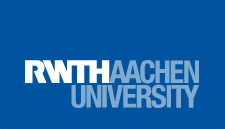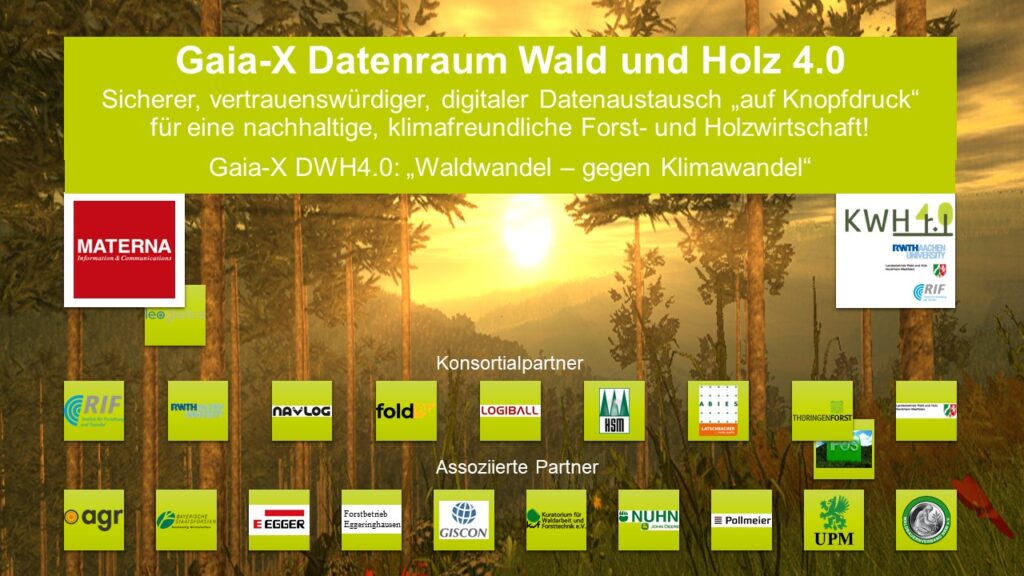Kategorie: ‘Information, Kommunikation und Elektronik’
New Publication by Professor Lemme and Colleagues
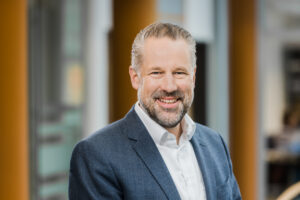
Portrait of Prof. Lemme (© JRF)
Healing Achilles heel of two-dimensional transistors
Stability – in the sense of stable operation thorough lifetime – is one of the key characteristics that an electronic device need to present to be suitable for applications. And it is the Achilles heel of transistors based on two-dimensional materials, which typically show much worse stability than devices based on silicon. A team of researchers from TU Wien, AMO GmbH, RWTH Aachen University and Wuppertal University has now demonstrated a novel engineering approach to enhance the electrical stability of two-dimensional transistors by carefully tuning the Fermi energy. The results have been reported in Nature Electronics.
Today, there is little doubt that devices based on graphene and other two-dimensional (2D) materials can exceed the state of the art for certain applications, thanks to their intrinsic properties. Two-dimensional materials are also seen as some of the most promising candidates for realizing ultimately scaled transistors at the end of the roadmap of silicon technology. However, devices based on 2D materials often show poor electrical stability, meaning that their behavior changes depending on their operation history.
“Component reliability is one aspect that is often neglected in research. This is precisely where we have been working for several years, because it is of central importance for applications.” explains Professor Max Lemme, scientific director of AMO GmbH and Head of the Chair of Electronic Devices at RWTH. The instability is not only caused by 2D materials themselves, but mostly by charges trapped into the oxide-insulator used to fabricate the transistors. “Ideally, one would like to use a different insulator with fewer charge traps,” says Lemme, “but there are no scalable solutions for this yet. In our work, we have shown instead that it is possible to use a standard insulator such as aluminum oxide and to significantly suppress the adverse effects of the charge traps in the oxide, by adjusting the charge carrier density in the 2D material.”
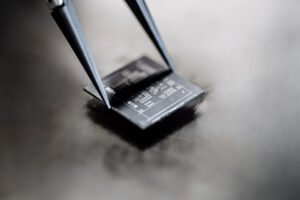
© Martin Braun
The work combines a thorough theoretical analysis of the novel approach – dubbed by the authors ‘stability-based design’ – and a proof of principle demonstration of the concept, performed by measuring different types of graphene-based FETs. The key idea of the approach is to try to engineer the combination 2D-material/insulator in such a way that the energy of the charge traps in the insulator is as different as possible from the one of the charge carriers in the 2D material. Lemme explains: “Graphene based FETs were the ideal test bed for our approach, as it is relatively easy to tune the energy of charge carriers in graphene. The approach, however, is applicable to all FETs based on 2D semiconductors”. These results represent a major step forward towards stable and reliable 2D materials transistors to be integrated in semiconductor technology.
Bibliographic information:
T. Knobloch, B. Uzlu, Y. Yu. I.llarionov, Z. Wang, M. Otto, L. Filipovic, M. Waltl, D. Neumaier, M. C. Lemme, T. Grasser, Improving stability in two-dimensional transistors with amorphous gate oxides by Fermi-level tuning, Nature Electronics (2022) – Open Access
DOI: 10.1038/s41928-022-00768-0
Contact:
Prof. Max C. Lemme
AMO GmbH
lemme@amo.de
Review of the 150th anniversary exhibition of the RWTH
From October 30, 2021 to February 13, 2022, the 150th anniversary exhibition of the RWTH took place at the Centre de Charlemagne in Aachen. ISEA – the Institute for Power Electronics and Electrical Drives – also contributed with some exhibits to illustrate the highlights from research and the development of RWTH since its foundation in October 1870.
For all those who could not be there and see this wonderful exhibition for themselves, we have a short review.
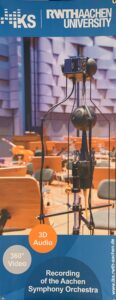
Among others, the IKS was also involved. The project “Virtual visit” dealt with the 3D telephony of the future: Who hasn’t had the wish to beam to the other side while talking on the phone? At least via audio, this would be possible in the future; for example, one could already sit virtually in the middle of a concert of the Aachen Symphony Orchestra.
Prof. Dr. Peter Jax presented the state of the art as well as current research topics in his lecture and invited to an exciting discussion afterwards.
It was very interesting to get to know a current research project of the IKS and to experience the research live.
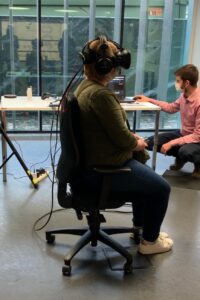
The content of the lecture was further illustrated in the exhibition by virtually sitting in the middle of the concert of the Aachen Symphony Orchestra. The aim was to perceive the sound in 3 dimensions. To experience this phenomenon, all one had to do was put on a pair of virtual reality glasses and enjoy the sounds of the Aachen Symphony Orchestra.
It was particularly fascinating to be able to hear the sounds from all directions and at the same time to be able to identify the direction from which they came. It was easy to follow the sounds more closely by turning around to look at them with the glasses. It was really a great insight into the research of the IKS.
The Future of Networking
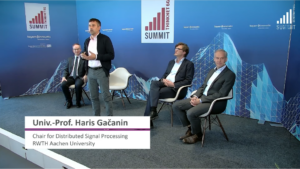 Professor Dr. Haris Gačanin, head of the Chair for Distributed Signal Processing and co-director of the Institute of Communication Technologies and Embedded Systems, presented the research activities of the 6GEM Research Hub at the Thinknet 6G Summit. The Thinknet 6G Summit is an international conference focused on the next generation of communication networks.
Professor Dr. Haris Gačanin, head of the Chair for Distributed Signal Processing and co-director of the Institute of Communication Technologies and Embedded Systems, presented the research activities of the 6GEM Research Hub at the Thinknet 6G Summit. The Thinknet 6G Summit is an international conference focused on the next generation of communication networks.
As digitalization progresses, mobile communications communication takes on the crucial role of providing the communication infrastructure for society as a whole. The current generation of mobile communication, 5G, is the first to shift focus away from individual end-user communications to industrial applications (Industry 4.0), logistics, transportation and eHealth. The subsequent generation, 6G, is expected to further expand network capacity and speed to enable applications with significantly higher connectivity requirements, such as fully autonomous driving.
In this regard, the 6GEM Research Hub is focusing more on the practical impact that 6G will have on our society. After all, this advanced infrastructure must provide adaptive and resilient communication systemss for a wide range of requirements and applications for the benefit of humanity.
Rayleigh Medal für Professor Michael Vorländer/ Rayleigh Medal for Professor Michael Vorländer
The Institute of Hearing Technology and Acoustics is proud to announce that Professor Michael Vorländer has recently been awarded the prestigious Rayleigh Medal, the highest award of the Institute of Acoustics. Therefore, we from the Faculty of Electrical Engineering and Information Technology also say, congratulations!
The Rayleigh Medal is the highest award of the Institute of Acoustics and is given without regard to age to individuals who have made outstanding contributions to acoustics. The medal is named for John William Strutt, Third Baron Rayleigh (1842-1919), a highly versatile physicist who conducted both experimental and theoretical research in virtually all areas of the field. His book The Theory of Sound remains a landmark in the development of acoustics.
With this award, Michael joins a list of very well-known acousticians such as Manfred Schröder, Hugo Fastl, Leo Beranek, and his predecessor Heinrich Kuttruff who have also been awarded this medal.
CARL – Interdisciplinary Research Institution in Aachen
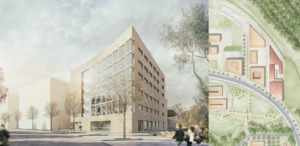
Copyright: KSG
A center for fundamental research into the ageing of battery materials and power electronic systems is currently being established at RWTH Aachen University. The “Center for Ageing, Reliability and Lifetime Prediction of Electrochemical and Power Electronic Systems“, CARL for short, is an interdisciplinary research facility where staff from ten core professorships and around 20 other chairs and institutes at RWTH Aachen and Forschungszentrum Jülich can conduct groundbreaking research. These include scientists from the disciplines of chemistry, physics, mathematics, computer science, materials science, mechanical and electrical engineering. The question of service life is essential when considering economic viability. For instance, this is important for car manufacturers, depreciation periods, warranties and to be able to assess reliability as part of functional safety.
(Deutsch) Mobilfunkexpertise in Nordrhein-Westfalen – BMBF wählt 6G-Forschungs-Hubs aus
RWTH spin-off acquired – Silexica now belongs to Xilinx Inc.
 RWTH spin-off Silexia, founded in 2014 at the Institute for Communication Technologies and Embedded Systems, was acquired this past week by Xilinx, Inc. the current market leader in adaptive computing. Founded by Maximilian Odendahl, Johannes Emigholz, Dr. Weihua Sheng, Prof. Jeronimo Castrillon and Prof. Rainer Leupers within the UMIC Cluster of Excellence, the start-up was initially funded through the BMBF’s EXIST- program, and early industrial technology sponsors included Huawei and Samsung. Since then, the company has raised a total of around US$28 million from international investors and has become a leading provider of C/C++ programming and analysis tools for multicore and FPGA system-on-chip architectures.
RWTH spin-off Silexia, founded in 2014 at the Institute for Communication Technologies and Embedded Systems, was acquired this past week by Xilinx, Inc. the current market leader in adaptive computing. Founded by Maximilian Odendahl, Johannes Emigholz, Dr. Weihua Sheng, Prof. Jeronimo Castrillon and Prof. Rainer Leupers within the UMIC Cluster of Excellence, the start-up was initially funded through the BMBF’s EXIST- program, and early industrial technology sponsors included Huawei and Samsung. Since then, the company has raised a total of around US$28 million from international investors and has become a leading provider of C/C++ programming and analysis tools for multicore and FPGA system-on-chip architectures.
2020 Best Paper Award of the IEEE Open Access Journal of Power and Energy
Univ. Prof. Ferdinanda Ponci, Teaching and Research Field Monitoring and Distributed Control for Energy Systems, and Univ. Prof. Antonello Monti, Head of ACS and Chair of Automation of Complex Power Systems, have received the 2020 Best Paper Award of the IEEE Open Access Journal of Power and Energy for their publication “A benchmark system for hardware-in-the-loop testing of distributed energy resources”.
IEEE 2020 Best Papers and Outstanding Reviewers
Profile Area Information & Communication Technology
The Profile Area Information and Communication Technologies (ICT) plays an important role in all global challenges the institutional strategy of RWTH Aachen University addresses. Major topics of ICT such as Smart Systems, eHealth & AAL, Wireless Communication or Data Mining have an enormous research potential and a considerable practical relevance. On the following pages you will find detailed information about our objectives, issues, activities and results.
Audiovisual Virtual Worlds made in Aachen
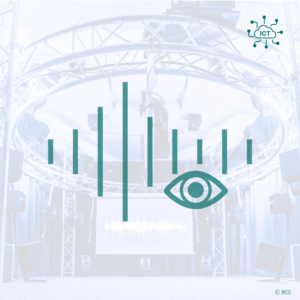
Virtual reality (VR) is increasingly becoming a powerful and realistic tool for scientific and industrial applications. With it, “living” virtual worlds can be created. Users can interact with virtual agents (VAs). Convincing and dialogue-capable VAs are only conceivable through the realistic visual and acoustic reproduction of human behaviour.
In the profile area “Information & Communication Technology”, the Institute for Technical Acoustics and the Teaching and Research Area of Virtual Reality and Immersive Visualisation at RWTH are developing methods and algorithms for an audiovisual simulation of virtual worlds and especially VAs. The special feature here is the prioritisation of acoustic simulation.
The AUDICTIVE priority program, coordinated by RWTH professor Janina Fels, also deals with this topic and brings together the disciplines of cognitive psychology, acoustics and computer science.
Energy-Efficient Artificial Intelligence
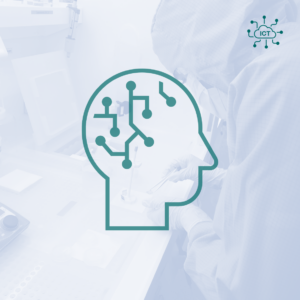
A revolution in computer architecture – this is what scientists at RWTH are working on, among others, in the Information & Communication Technology (ICT) Profile Area.
Today’s computers are not powerful enough for many artificial intelligence (AI) applications. They consume too much energy for complex pattern recognition tasks. New types of “neuromorphic” computers promise significantly improved energy efficiency and performance: they are based on the architecture of the highly efficient human brain.
The brain handles cognitive applications and pattern recognition much more energy-efficiently than conventional computers. Pattern recognition requires handling very large amounts of data in real time. The analysis of these data sets (Big Data) is a central building block of cognitive functions that dominate all AI applications, such as autonomous driving, the Internet of Things or smart cities
From Hardware Trojan to Blackout

Prof. Leupers, Chair for Software for Systems on Silicon, and Prof. Monti, Chair of Automation of Complex Power Systems at the E.ON Energy Research Center, are researching new cyber security methods for energy networks and microprocessors.
By exploiting security holes in the operating system, attackers are able to take unauthorised control of the system, spy on data or paralyse the system. Recently, there have even been attacks on the hardware of computer systems, especially on the processor. The energy supply is also increasingly targeted by attacks: by manipulating the infrastructure as well as falsifying the measurement results, the regulation of the network can be permanently disrupted.
This problem is to be solved by a “Phasor Management Unit”, which serves to regulate renewable energies in the power grid and withstands attacks. Since the technical possibilities of attackers will continue to improve, the topic of hardware security will remain relevant to research.
Panning Beams and High Data Rates
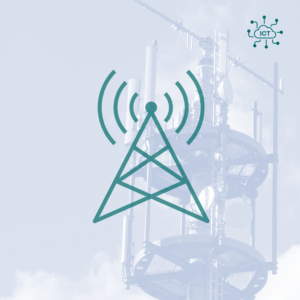
Mobile internet: the possibility of surfing on the move with high quality and speed. This is leading to a growing demand for higher data transfer rates. To this end, mobile network operators are expanding their networks and introducing new mobile radio standards. Compliance with immission protection limits for high-frequency electromagnetic fields is of decisive importance here.
Scientists at the Institute of High Frequency Technology at RWTH Aachen University are conducting research to determine and estimate the immission caused by new mobile radio technologies. The focus is on the compatibility of immissions of electromagnetic fields with the environment and especially with humans. One of the new technical possibilities is the use of massive “multiple input multiple output”.
With this, signals can be strongly bundled and radiated in so-called beams. In this way, users can be supplied with high signal strengths up to the edge of the radio cell and at the same time the interference of other users can be reduced.
Source: ICT Science Magazine – You can find more information on these topics there.
